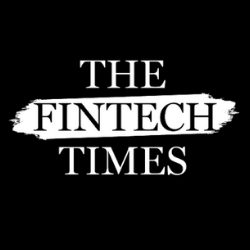Neobanks are showing consumers what a digitally native banking experience looks like, leading the finance industry to believe that they’re outpacing traditional banks.
But, as they’ve raced ahead to introduce new services like branchless banking, high-yield savings and low or no fees, neobanks have given traditional banks a roadmap for their own digital journeys.
Traditional banks are in a unique position to meet consumers’ and businesses’ larger financing needs, thanks to their decades of infrastructure, experience and capital – and their licence to do it. The right roadmap will not just help them catch up; it will lay the foundation for building even better banks.
As neobanks continue reimagining the user experience, traditional banks are quietly planning their approach to moving beyond the legacy systems that have prevented them from competing and operating in the open financial ecosystem.
Cloud migration is a necessary part of this process. It’s often what stands between traditional banks and their ability to keep up with – and ultimately outpace – neobanks. Most banks aren’t confused about this fact, but many equate transformation with a complete gutting of their core systems.
This is only one approach to digitisation, however. Determining the path of least resistance requires looking at the level of disruption each will introduce, as well as the technology, skills, budget and talent involved – all in comparison to a bank’s specific requirements. Here are the three most common paths to digital transformation.
Rip and replace
This method is exactly what it sounds like: A complete overhaul of a bank’s core system and legacy infrastructure, all at once, from scratch. Despite being an enormous undertaking, this approach is a knee-jerk reaction for many CIOs and CEOs when faced with market pressure or the inability to attract and retain digital-first customers.
Once they start exploring what goes into a complete overhaul of their core systems, many banks conclude that it’s too risky, time-consuming and expensive. According to McKinsey, the cost of integrating a new digital core system could exceed $50million for a medium-size bank, and is typically between $300million to $400million for a larger bank. These revelations scare many banks away from this all-encompassing approach to transformation – and sometimes from digitisation as a whole.
Building a bank within a bank
A perhaps more manageable and less disruptive option for a traditional bank is to build a digital banking service within their existing infrastructure. This approach, also known as ‘greenfield banking’, is less costly than a full system overhaul. It also has the potential to generate new streams of revenue by giving traditional banks the means to reach and grow their roster of new, digital-first customers, while strengthening their relationships with their less digital-savvy existing ones.
Traditional banks that launch their own digital banking arm quickly learn that they have several advantages over neobanks. For instance, they can leverage their own security infrastructure, licensing and capital, rather than forging partnerships with third-parties like neobanks have to. Many also have decades-long legacies and brand recognition that they can leverage to quickly scale demand.
Take Standard Chartered. Despite having a presence in 60 markets, the 160-year-old international bank was still operating on architecture introduced in the 19th century. When the Hong Kong Monetary Authority announced that it would support the launch of eight new digital banks in 2019, Standard Chartered wanted to participate, but the idea of building a new digital bank from the ground up seemed impossible. Once the bank realised the lost opportunity of not evolving its offerings for the 21st century, its commitment to the future rapidly overshadowed its fears of the unknown.
Standard Chartered ultimately implemented a cloud-based, core digital platform from Thought Machine for the specific purpose of building its new digital arm. The result is Mox: An app-based fully functional bank deployed in just 18 months. Within just a year of launching, Mox expanded Standard Chartered’s customer base by more than 160,000 digital account holders who have spent over HK$2billion with their Mox accounts and cards.
Progressive modernisation
A third option that is popular among banks is a progressive approach to modernisation. Rather than build a neobank, they often introduce a specialised product to serve as a launchpad for their digital journey. The process can be implemented in a matter of months, or follow a more gradual approach to mitigate risk and align costs with business success.
Many banks are finding particular success by configuring new digital products around significant financial moments in consumers’ lives. PNC Bank, for instance, launched a digitised version of its mortgage application to test out a digital-first approach to home buying this year. This enabled it to experiment with newer technologies like cloud, AI and machine learning before taking the plunge.
Banks that opt for this approach can keep their existing infrastructure in place while testing the digital model, and then begin migrating to a full digital architecture once decision-makers are on board.
Each path has its own unique advantages, and the digital journey will look different for every bank. But, one thing is certain for all – doing nothing is not a viable option.
Written by Marco Santos, CEO of global digital transformation company GFT United States and Latin America. As one of the largest implementation partners for trusted cloud solutions including AWS, Google Cloud, Salesforce, Thought Machine and Guidewire, GFT is reimagining companies’ legacy infrastructures to take advantage of digital opportunities and digital customers. With more than 25 years of experience in the technology sector, Santos has established GFT as a leader transforming companies’ digital visions into tangible realities.




